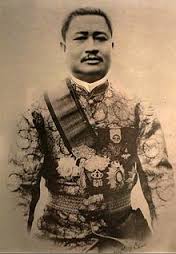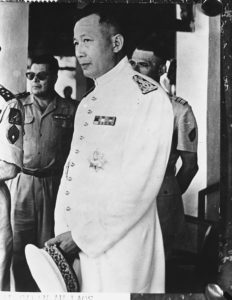
Laos never held any importance for France other than as a buffer state between Thailand and the more economically important Annam and Tonkin.
During their rule, the French introduced the corvée, a system that forced every male Lao to contribute 10 days of manual labour per year to the colonial government. Laos produced tin, rubber, and coffee, but never accounted for more than one percent of French Indochina’s exports. By 1940, around 600 French citizens lived in Laos. Under French rule, the Vietnamese were encouraged to migrate to Laos, which was seen by the French colonists as a rational solution to a labour shortage within the confines of an Indochina-wide colonial space. By 1943, the Vietnamese population stood at nearly 40,000, forming the majority in the largest cities of Laos and enjoying the right to elect its own leaders. As a result, 53% of the population of Vientiane, 85% of Thakhek, and 62% of Pakse were Vietnamese, with only the exception of Luang Prabang where the population was predominantly Lao. As late as 1945, the French drew up an ambitious plan to move massive Vietnamese population to three key areas, i.e., the Vientiane Plain, Savannakhet region, and the Bolaven Plateau, which was only derailed by the Japanese invasion of Indochina.

During World War II in Laos, Vichy France, Thailand, Imperial Japan and Free France occupied Laos. On 9 March 1945, a nationalist group declared Laos once more independent, with Luang Prabang as its capital but on 7 April 1945 two battalions of Japanese troops occupied the city. The Japanese attempted to force Sisavang Vong (the King of Luang Phrabang) to declare Laotian independence but on 8 April he instead simply declared an end to Laos’s status as a French protectorate. The King then secretly sent Prince Kindavong to represent Laos to the Allied forces and Prince Sisavang as representative to the Japanese. When Japan surrendered, some Lao nationalists (including Prince Phetsarath) declared Laotian independence, but by early-1946, French troops had reoccupied the country and conferred limited autonomy on Laos.

During the First Indochina War, the Indochinese Communist Party formed the Pathet Lao independence organization. The Pathet Lao began a war against the French colonial forces with the aid of the Vietnamese independence organization, the Viet Minh. In 1950 the French were forced to give Laos semi-autonomy as an “associated state” within the French Union. France remained in de facto control until 22 October 1953, when Laos gained full independence as a constitutional monarchy.
Independence and Communist Rule (1953–present):
The First Indochina War took place across French Indochina and eventually led to French defeat and the signing of a peace accord for Laos at the Geneva Conference of 1954. In 1955, the US Department of Defense created a special Programs Evaluation Office to replace French support of the Royal Lao Army (RLA) against the communist Pathet Lao as part of the US containment policy.
